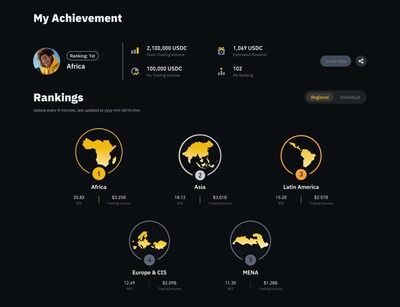The Web3 Battlefront Awakens: Helium Wars Testnet Launch Storms SEI with Thousands on Day One
NOTTINGHAM, England, June 3, 2025 /PRNewswire/ — Helium Wars, the much-anticipated AAA third-person Web3 shooter, has officially launched its Testnet on the SEI Network – and the gaming community has responded with overwhelming energy.
Day-one highlights:
- 700+ closed access invites filled in under 2 hours
- 500+ PvP matches fought across dynamic battle arenas
- 1,500+ players active in the in-game lobby
- Average session time: 65+ minutes
This explosive debut signals rising demand for competitive, skill-first blockchain games. Helium Wars blends responsive shooter mechanics with real digital ownership through NFTs and its native $HELM token economy.
“Helium Wars is more than a game – it’s a statement about where Web3 gaming is headed,” said Josh, Founder at Helium Wars. “From day one, our focus has been delivering AAA gameplay with real asset ownership, and the response to our Testnet proves the community is ready.”
Helium Wars: A Tactical Shooter With Real Stakes
Set on the fractured planet Zaeon, Helium Wars immerses players in a resource war over Helium -a powerful energy source with immense value. Players join one of two rival factions: the technologically dominant Aetherians or the elemental Valerians, each with distinct lore and combat strategies.
Built on Unreal Engine 5, the game features high-fidelity environments and smooth controls across core modes like Deathmatch, Team Deathmatch, and the signature ‘Helium Wars’ resource-control mode. All in-game assets – gear, weapons, cosmetics – are minted as NFTs, empowering players with true tradability and utility beyond the battlefield.
Through $HELM tokens, players will:
- Stake, earn, and participate in in-game governance
- Influence future game direction through DAO-based voting
- Trade, upgrade, or transfer NFTs that hold real value across the ecosystem
The long-term vision is to evolve into a fully decentralized, cross-game universe – blending immersive gameplay with a sustainable, player-powered metaverse. Helium Wars is shaping up to be more than a game. It’s becoming a decentralized battleground where strategy, skill, and ownership collide.
Enter the battlefield. Dominate. Own it.
X: @0xHeliumWars
Discord: Join the War Room
Photo: https://www.007stockchat.com/wp-content/uploads/2025/06/Helium_Wars_Testnet_Launch.jpg
![]() View original content to download multimedia:https://www.prnewswire.com/news-releases/the-web3-battlefront-awakens-helium-wars-testnet-launch-storms-sei-with-thousands-on-day-one-302471540.html
View original content to download multimedia:https://www.prnewswire.com/news-releases/the-web3-battlefront-awakens-helium-wars-testnet-launch-storms-sei-with-thousands-on-day-one-302471540.html
SOURCE Helium Wars

Featured Image: Unplash @ behy_studio










